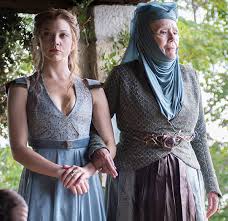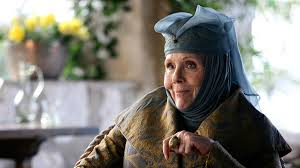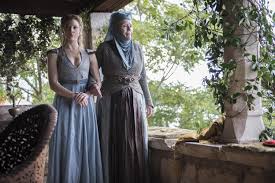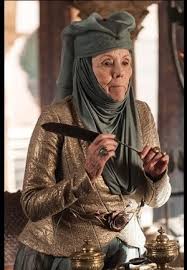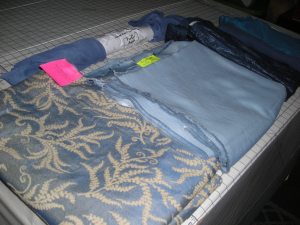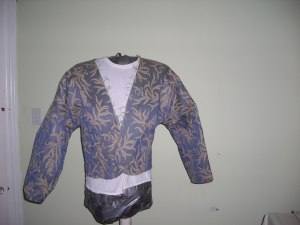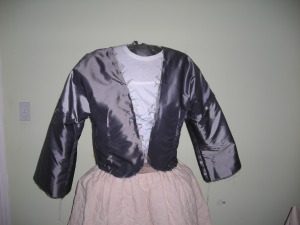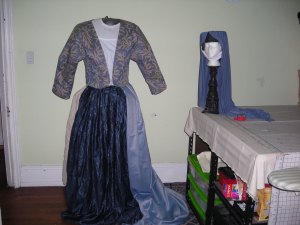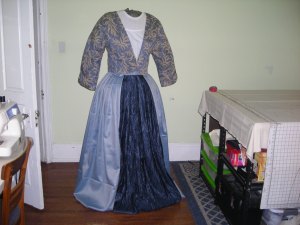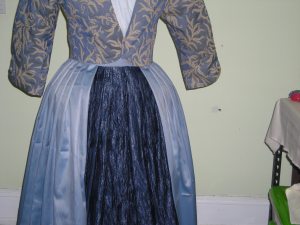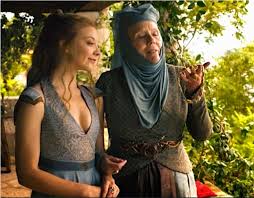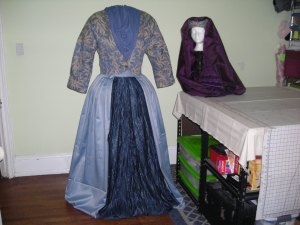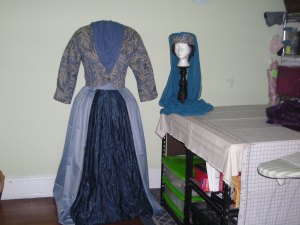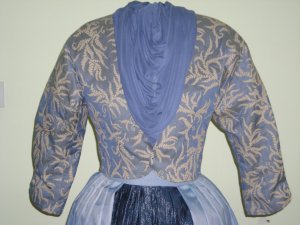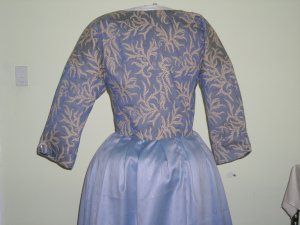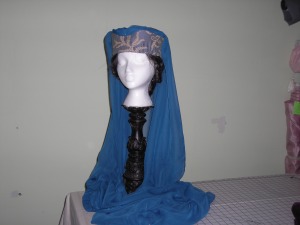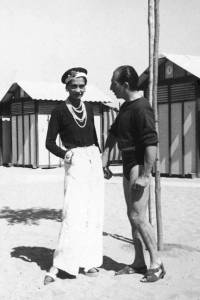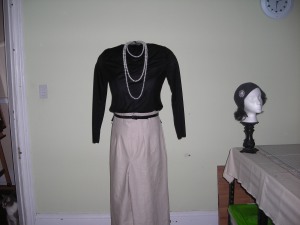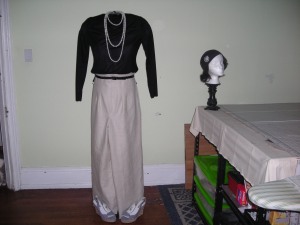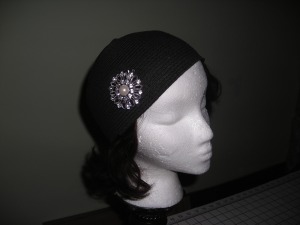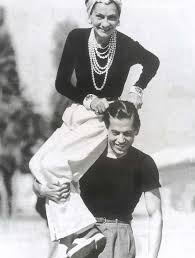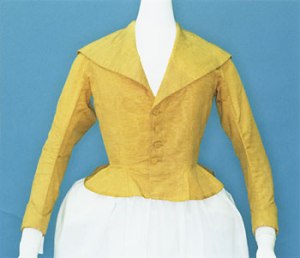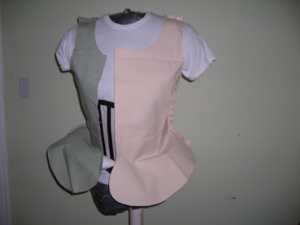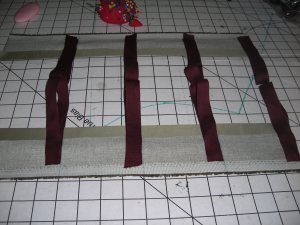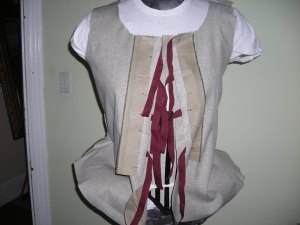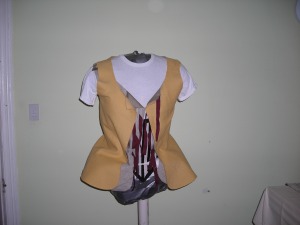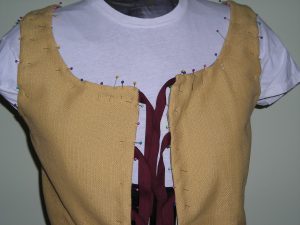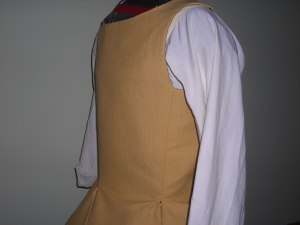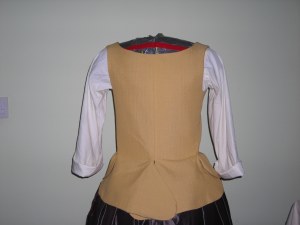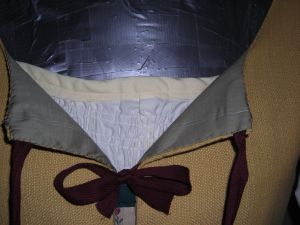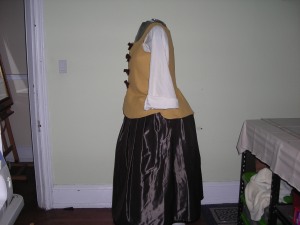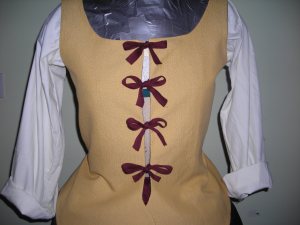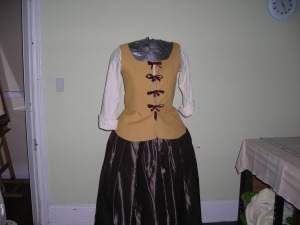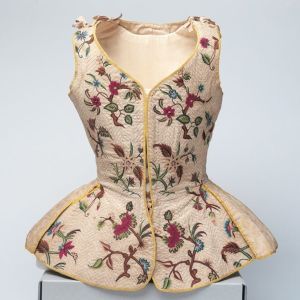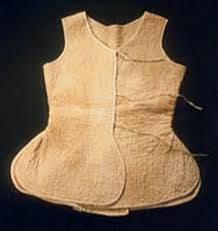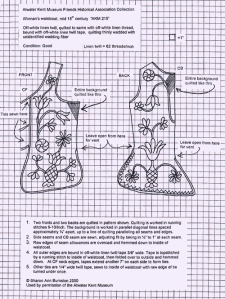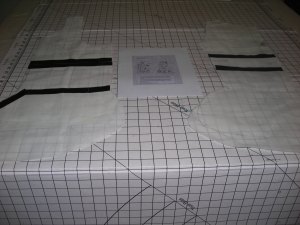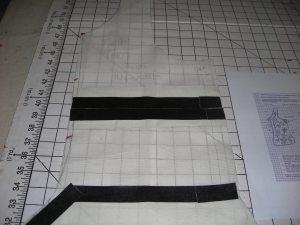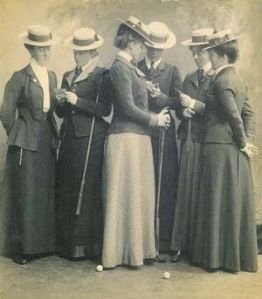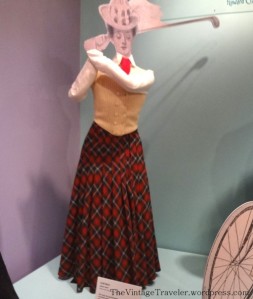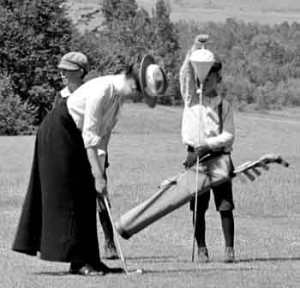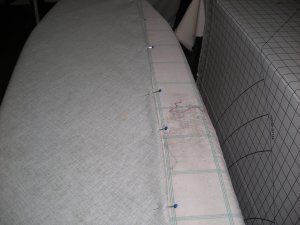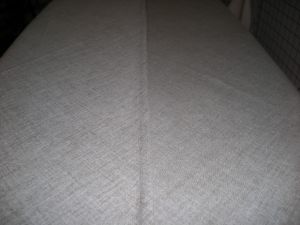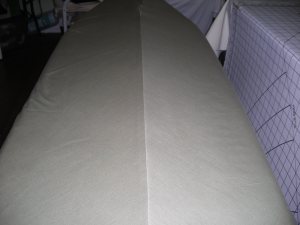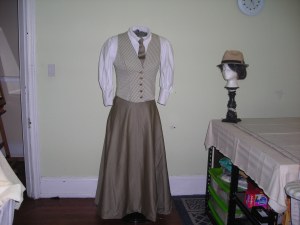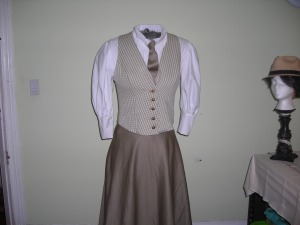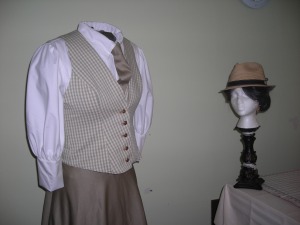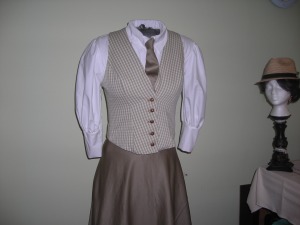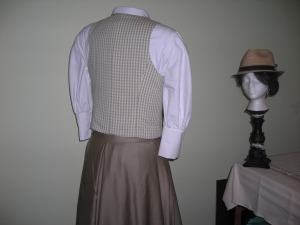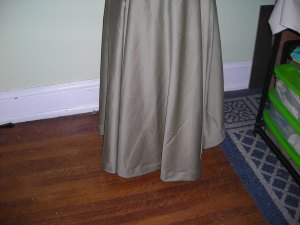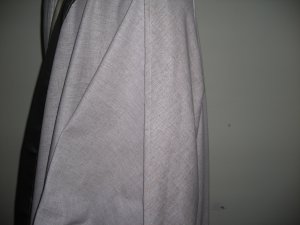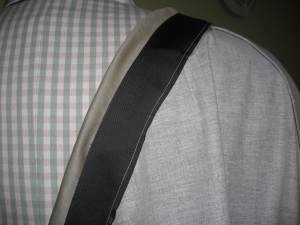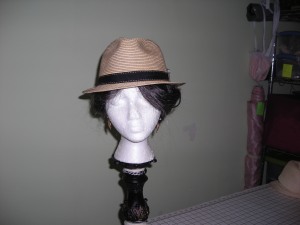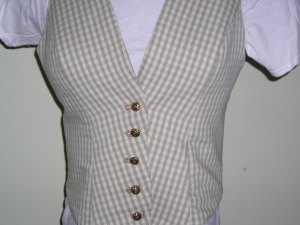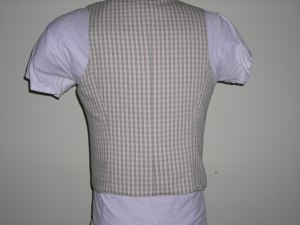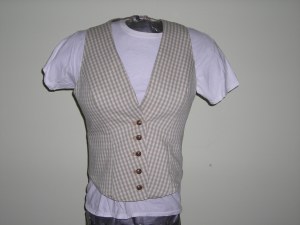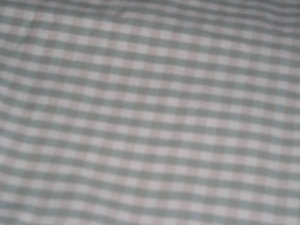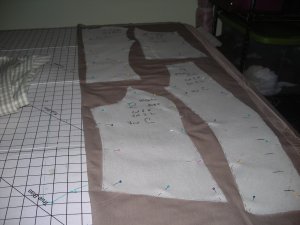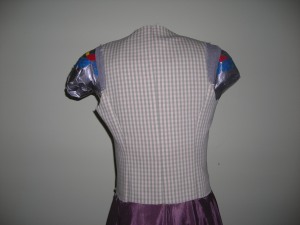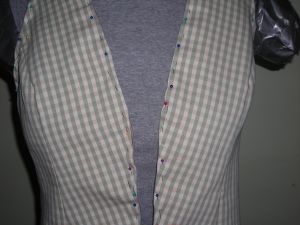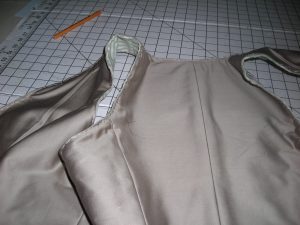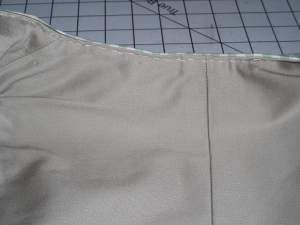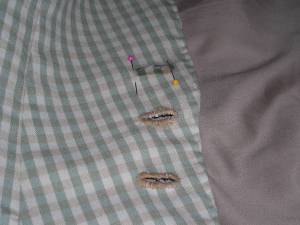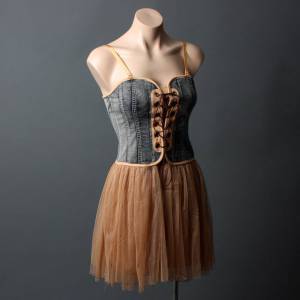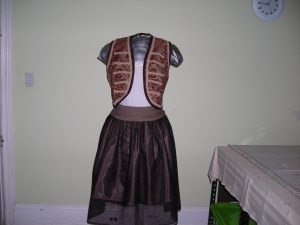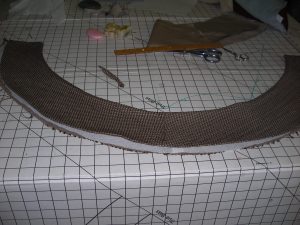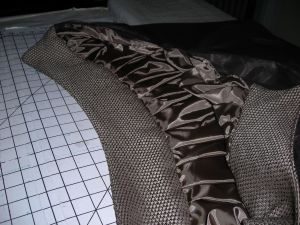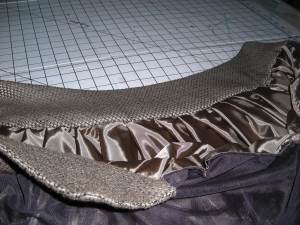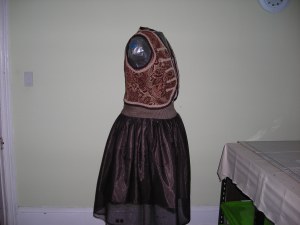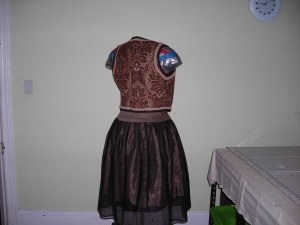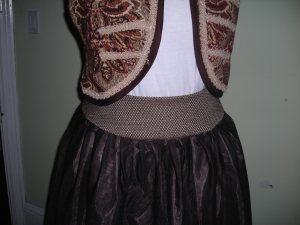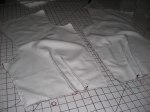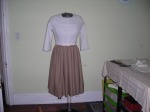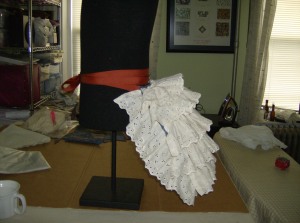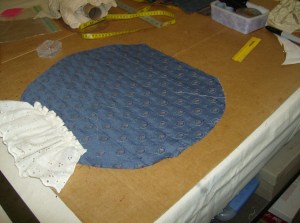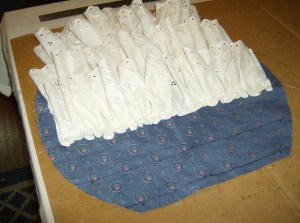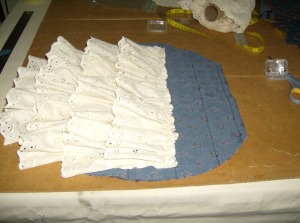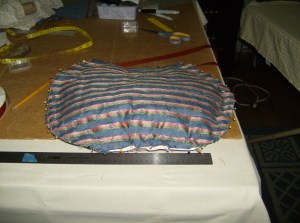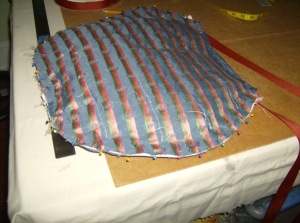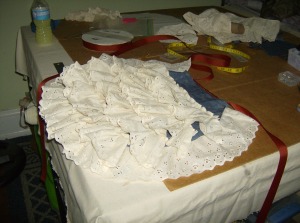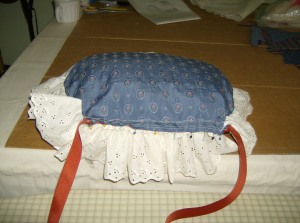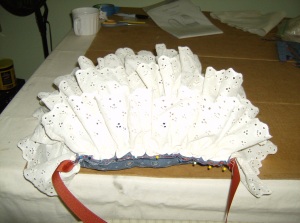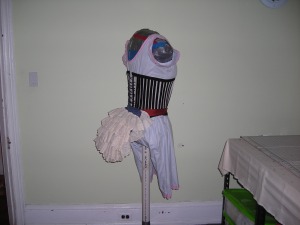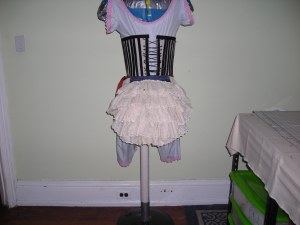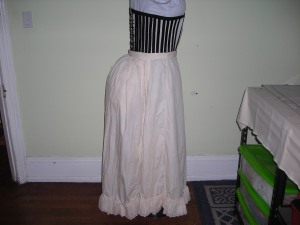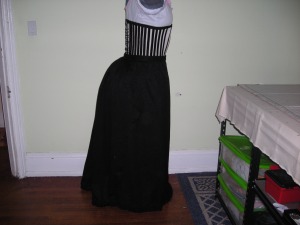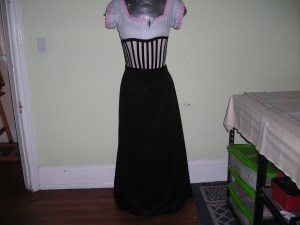I chose the HBO Series, The Game of Thrones, specifically the character of Lady Oleana Tyrell, the matriarch of House Tyrell. She is quite a force in the series. She is ancient and she usually says whatever on her mind. She doesn’t seem to take any prisoners, so beware. She is also referred to as the Queen of Thorns because of the many barbs that she utters.
Here, I present images of the lady:
Her costumes consist of many interesting elements. Most notable are her Medieval style wimple, barbette, hat and vale, add the beautiful brocade fabric that she seems to favor. All of which were used to create her costume and represent her station in life. There was a little scene in which she and her granddaughter were selecting jewelry for some occasion and the pieces that she didn’t like, she simply tossed off the balcony.
This to me was the challenge to select fabrics that conveyed her style and her station in life as the head of her house. The house Tyrell’s color is green, however, Lady Oleana wore other colors as well.
Through out this year’s challenge, I have used fabrics and notions from my stash. Again only using material from my stash, my color story will be the following:
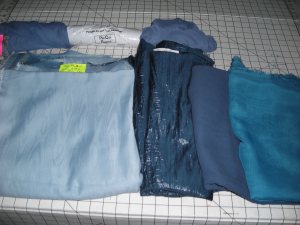
Colors are reading really blue, but some are more steel grayish blue, and cobalt blue. I label my fabric with date, amount and number of yards. The oldest fabric in this group selection dates back to 2010.
I particular loved the fern pattern encrusted fabric. This will be the material for the jacket. It was a remnant with only 1 3/4 yards purchased in 2010 a little over $3.
I started with the jacket first. I used Vogue pattern V8522 and morphed style B and C together to obtain the style similar to this one:
Oleana usually appears in wide shawl collars jackets and coats, but ocassionally also in no collar jackets. I chose the no collar jacket as my inspiration. This is the jacket after 2 mock-ups. It is beginning to take shape on Maude. I also altered the shape of the sleeves somewhat.
The lining has been applied to the jacket to create a bag lining. I normally don’t like bag linings but the shoulders were so wide in this instance it was not a problem to pull everything through one shoulder. It took forever to press though.
The outer skirt and underskirt fabric really play off of each other and the move the color story forward. I love them. To the right you see the beginning of the hat with vale.
I added the skirts to the same waistband. Both under and outer skirts are pleated.
This finished outfit.
The jacket could have been just a couple of inches longer.
This was a really fun challenge for me. It was a lot of work, but to me everything turned out as I had envisioned.
The Challenge #20 – Alternative Universe
Fabric: Cotton blend brocade, two unknown fabric contents
Year: ?
Historically Accurate: No
Hours to Complete: Two full weeks
First: Not Yet
Total Cost: $15 Approximately

